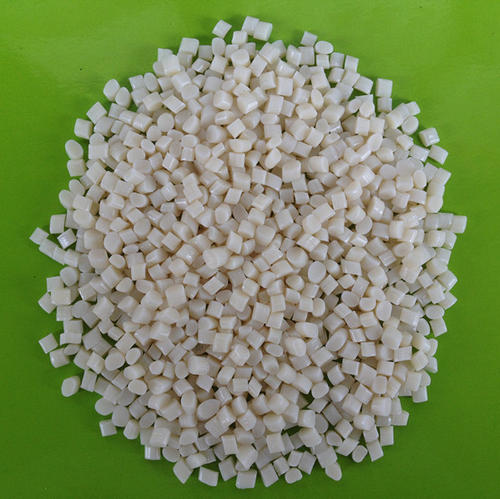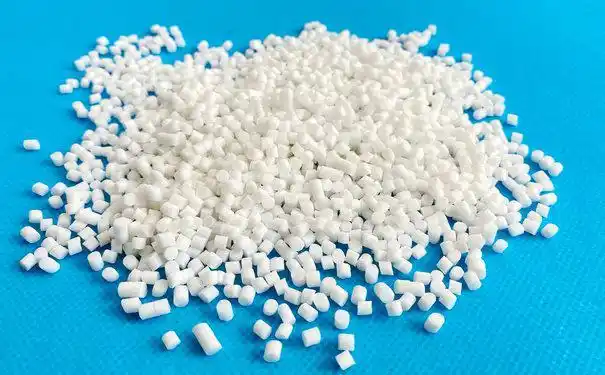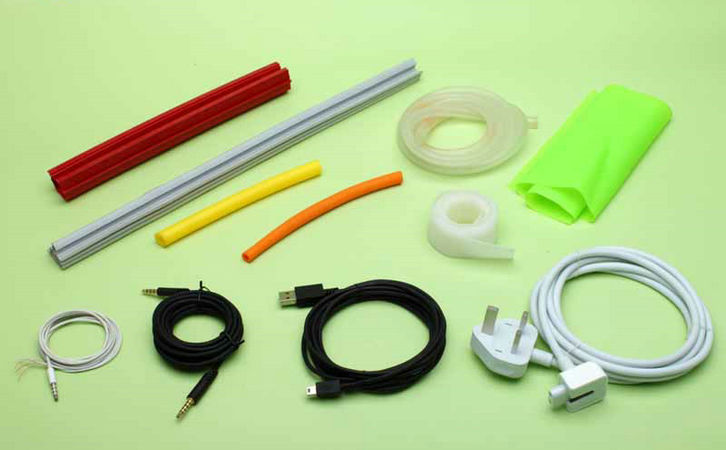In the field of material science and industrial applications, TPE (Thermoplastic Elastomer) materials are widely used in various industries such as automotive, electronics, medical, and daily necessities due to their unique performance advantages, such as good elasticity, processability, and environmental friendliness. However, many users find in actual use that TPE materials become sticky after being used for a period of time. This not only affects the appearance and feel of the products but may also have a certain impact on their performance and service life. As an expert deeply engaged in the material industry for many years, today I will delve into why TPE materials become sticky after being used for a while and how to solve this problem.

Basic Characteristics of TPE Materials
Before exploring the reasons for the stickiness of TPE materials in depth, let’s first understand their basic characteristics. TPE is a type of polymer material that combines the elasticity of rubber and the processability of plastics. It does not require vulcanization and can be processed using conventional plastic processing methods such as injection molding, extrusion, and blow molding. TPE materials are usually composed of hard segments and soft segments. The hard segments provide strength and hardness to the material, while the soft segments impart good elasticity and flexibility.
TPE materials have many advantages. For example, they have a wide hardness range, from Shore A0 to Shore D70; good temperature resistance, allowing them to maintain stable performance within a certain temperature range; environmental friendliness and non-toxicity, meeting environmental standards such as ROHS and REACH; and recyclability, reducing production costs and environmental impact. However, it is precisely because of these characteristics that TPE materials may be affected by various factors during use, leading to the occurrence of stickiness.
Possible Reasons for TPE Material Stickiness
1. Environmental Factors
Temperature: TPE materials are sensitive to temperature. In high-temperature environments, the movement of TPE molecular chains intensifies, and the intermolecular forces weaken, causing the material surface to become soft and prone to adhesion. For example, some TPE products placed outdoors, such as children’s toys and outdoor supplies, may become sticky due to prolonged exposure to high temperatures in summer.
Humidity: Humidity is also an important factor affecting the performance of TPE materials. When the ambient humidity is high, TPE materials may absorb moisture from the air, leading to changes in their internal structure and making the surface damp and sticky. Especially in humid regions or seasons, TPE products are more likely to have stickiness issues.
Ultraviolet (UV) Light: Prolonged exposure to UV light can cause TPE materials to undergo photo-oxidation reactions, leading to molecular chain breakage, a decline in physical properties, and phenomena such as surface aging and stickiness. For instance, some TPE seals and awnings used outdoors may become sticky due to UV exposure if they are not properly protected against UV rays.

2. Material Formulation Factors
Excessive Plasticizer Addition: To improve the processability and flexibility of TPE materials, a certain amount of plasticizer is usually added. However, if too much plasticizer is added, during use, the plasticizer will gradually migrate from the interior of the material to the surface, causing the material surface to become sticky. The type and molecular weight of the plasticizer also affect its migration speed and extent. Small-molecule plasticizers are more likely to migrate.
Improper Oil Selection: Some operating oils are often added to TPE materials to adjust their hardness and fluidity. If the selected oil has poor compatibility with the TPE base material or the oil quality is unstable, the phenomenon of oil bleeding may occur during use, causing the material surface to become sticky.
Insufficient Antioxidants and Light Stabilizers: Antioxidants and light stabilizers can effectively delay the aging process of TPE materials and prevent them from becoming sticky. If the amount of antioxidants and light stabilizers added in the material formulation is insufficient or the performance of these additives is poor, they cannot effectively resist the damage caused by external environmental factors to the material, resulting in the material easily becoming sticky.
3. Processing Technology Factors
Excessive Processing Temperature: During the processing of TPE materials, if the processing temperature is too high, it can cause thermal degradation of the material and molecular chain breakage, thereby reducing the material’s performance and making the surface sticky. At the same time, an excessively high processing temperature may also accelerate the migration of plasticizers and oils, further aggravating the stickiness problem of the material.
Insufficient Cooling: In injection molding, extrusion, and other processing processes, if the cooling is insufficient, the heat inside the TPE products cannot be dissipated in time, leading to residual stress inside the products. It will also affect the crystallinity and molecular arrangement of the material, making the product surface prone to stickiness.
Unreasonable Mold Design: Mold design can also affect the quality of TPE products. If the runner design of the mold is unreasonable, it can cause uneven flow of the material inside the mold, resulting in local overheating or overcooling phenomena, which in turn affect the performance and surface quality of the products and increase the risk of stickiness.
4. Usage and Storage Factors
Long-term Pressure: If TPE products are subjected to continuous pressure during long-term use or storage, the molecular chains inside the material will deform, causing the product surface to appear dented and sticky. For example, some TPE mats stacked in a warehouse may become sticky due to long-term pressure if they are stacked too high and too heavy.
Contact with Chemical Substances: TPE materials may react with some chemical substances, causing the material surface to become sticky. For example, if TPE products come into contact with cleaning agents or cosmetics containing organic solvents, the organic solvents may dissolve the molecules on the TPE surface, making the material soft and sticky.

How to Solve the Problem of TPE Material Stickiness
1. Optimize Environmental Conditions
Control Temperature and Humidity: When using and storing TPE products, try to control the ambient temperature and humidity within appropriate ranges. For some TPE products that are sensitive to temperature and humidity, measures such as thermal insulation and moisture-proofing can be taken, such as wrapping the products with thermal insulation materials or placing desiccants.
Avoid UV Exposure: For TPE products used outdoors, choose materials with good UV resistance or apply a UV-resistant coating on the product surface to reduce the damage caused by UV rays to the material.
2. Adjust Material Formulation
Reasonably Control Plasticizer Dosage: According to the specific usage requirements of TPE products, reasonably select the type and dosage of plasticizers to avoid excessive addition. At the same time, choose plasticizers with good compatibility with the TPE base material and low migrability.
Select Appropriate Oils: When selecting operating oils, fully consider factors such as the compatibility and volatility of the oils with the TPE base material, and choose oils with stable quality and excellent performance.
Increase the Dosage of Antioxidants and Light Stabilizers: Appropriately increase the dosage of antioxidants and light stabilizers in the material formulation or choose additives with better performance to improve the anti-aging performance of TPE materials.
3. Improve Processing Technology
Control Processing Temperature: During the processing of TPE materials, strictly control the processing temperature to avoid thermal degradation of the material due to excessive temperatures. The optimal processing temperature range can be determined through experiments based on different TPE materials and product requirements.
Ensure Sufficient Cooling: Optimize the design of the mold cooling system to ensure that TPE products can be fully cooled during the processing. Multi-stage cooling, water cooling, and other methods can be used to improve cooling efficiency and reduce residual stress inside the products.
Optimize Mold Design: Reasonably design the structure of the mold runner, gate, etc., so that the material can flow evenly inside the mold and avoid phenomena such as local overheating or overcooling. At the same time, pay attention to the surface finish of the mold to reduce friction and scratches on the product surface.
4. Standardize Usage and Storage
Avoid Long-term Pressure: When storing TPE products, pay attention to reasonable stacking to avoid the products being subjected to excessive pressure for a long time. Layered stacking and the use of pallets can be adopted to reduce the pressure between the products.
Prevent Contact with Chemical Substances: When using TPE products, avoid contact with items containing organic solvents and other chemical substances. If the TPE products need to be cleaned, choose mild and non-corrosive cleaning agents.

Case Analysis
To better understand the problem of TPE material stickiness and its solutions, let’s analyze a practical case.
A certain automotive parts manufacturer produced a TPE seal strip that became sticky after being used for a period of time, resulting in a decrease in sealing performance and affecting the overall quality of the car. After investigation and analysis, it was found that the main reasons for the stickiness of the seal strip were as follows:
Material Formulation Problem: The TPE material used for the seal strip contained an excessive amount of plasticizer, and the selected oil had poor compatibility with the TPE base material. This led to a large amount of plasticizer and oil migrating to the surface during use, making the seal strip sticky.
Processing Technology Problem: During the extrusion processing of the seal strip, the processing temperature was too high, and the cooling was insufficient. This led to residual stress inside the seal strip and uneven molecular chain arrangement, further aggravating the stickiness problem.
Usage Environment Problem: The seal strip was installed in the engine compartment of the car and was exposed to high temperatures for a long time. It was also eroded by engine oil and other chemical substances, accelerating the aging and stickiness of the seal strip.
In response to the above problems, the manufacturer took the following solutions:
Adjust Material Formulation: Reduce the dosage of plasticizer, select an oil with better compatibility with the TPE base material, and increase the dosage of antioxidants and light stabilizers to improve the anti-aging performance of the material.
Improve Processing Technology: Optimize the extrusion processing technology, reduce the processing temperature, and strengthen the design of the cooling system to ensure that the seal strip can be fully cooled and reduce residual stress.
Improve Usage Environment: Apply a layer of high-temperature-resistant and chemical-resistant protective coating on the surface of the seal strip to reduce the erosion of high temperatures and chemical substances on the seal strip.
After the implementation of the above improvement measures, the problem of the TPE seal strip becoming sticky was effectively solved, the sealing performance was significantly improved, and the product quality was guaranteed.

Summary
The phenomenon of TPE materials becoming sticky during use is caused by the combined effects of multiple factors, including environmental factors, material formulation factors, processing technology factors, and usage and storage factors. To solve the problem of TPE material stickiness, we need to start from these aspects and take corresponding measures for optimization and improvement. In practical applications, we should comprehensively consider various factors according to the specific usage requirements and actual situations of TPE products and formulate reasonable solutions.
At the same time, as manufacturers and users of TPE materials, we should also strengthen the research and understanding of TPE material performance, continuously optimize material formulations and processing technologies, and improve the quality and performance of TPE products. Only in this way can we better meet market demands and promote the wide application of TPE materials in various fields.
I hope that through today’s sharing, you have a deeper understanding of the problem of TPE material stickiness, and I also hope that this content can be helpful to you in your actual work. If you have any other questions about TPE materials, feel free to leave a message in the comment section for exchange.

Related Q&A
Q: Can TPE materials that have become sticky recover?
A: Whether TPE materials that have become sticky can recover depends on the cause and extent of the stickiness. If the stickiness is caused by short-term environmental factors (such as high temperature and high humidity) and is mild, the material may gradually recover some of its performance after the environmental conditions are improved. However, if the stickiness is caused by material formulation problems (such as excessive plasticizer migration), severe aging, or chemical erosion, it is usually difficult to fully recover, and it may be necessary to replace the material or product.
Q: How to determine if the stickiness of TPE materials is caused by plasticizer migration?
A: Some simple methods can be used for preliminary judgment. For example, gently wipe the sticky surface of the TPE product with a clean tissue. If there is an oily substance on the tissue and the stickiness of the product surface is reduced after wiping, it is likely that the stickiness is caused by plasticizer migration. In addition, professional detection methods, such as infrared spectroscopy analysis, can also be used to detect the presence of plasticizers on the material surface.
Q: How to avoid buying TPE products that are prone to become sticky when selecting TPE materials?
A: When selecting TPE materials, you can consider the following aspects:
Choose a Reputable Supplier: Reputable suppliers usually have a stricter quality control system and can provide TPE materials with more stable quality.
Understand Material Performance Indicators: Check the material’s performance indicators such as hardness, tensile strength, elongation at break, temperature resistance, and aging resistance, and choose materials that meet the requirements of your products.
Request Samples for Testing from the Supplier: Before purchasing in bulk, request samples from the supplier for actual testing. Observe the performance changes of the material during use, especially whether it will become sticky.
Consult Professionals: Consult experts or technicians in the material industry to understand the characteristics and application scopes of different brands and models of TPE materials in order to make a more appropriate choice.
Q: What should be paid attention to during the storage of TPE products to prevent stickiness?
A: The following points should be noted during the storage of TPE products:
Storage Environment: Choose a dry, ventilated, and cool warehouse for storage to avoid direct sunlight and high-temperature and high-humidity environments. The warehouse temperature is best controlled at 20 – 30℃, and the relative humidity is controlled at 50% – 70%.
Packaging Method: Use sealed packaging to prevent the material from absorbing moisture and dust in the air. Desiccants can be placed inside the packaging to further reduce humidity.
Stacking Method: Stack the products reasonably to avoid stacking them too high or too heavy and prevent the products from being deformed and becoming sticky due to long-term pressure. Pallets can be placed between the products to reduce the pressure.
Regular Inspection: Regularly inspect the stored TPE products to and deal with possible problems in a timely manner, such as stickiness and aging.





